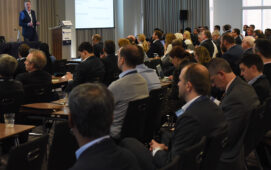The need for fast trading is nothing new. The origins of low latency trading are traced to the arbitrage desks of the 1990s, where speed and firepower were directly used to ‘pick off’ mispriced products. It wasn’t long before other markets caught on. Equity markets require low latency because of the widespread use of algorithms and automated trading tools, while fixed income and foreign exchange (FX) markets are highly sensitive to latency due to the extreme liquidity of some instruments and the tightness of the spreads.
Outside of these markets, ultra-low latency is considered “nice to have” rather than a business imperative. In any market the cost of excessive latency is high for businesses that are way off the pace. To avoid this, financial institutions must ensure that all projects to deliver new systems and algorithms must have low latency as one of their core non-functional requirements. The advantages of speed are not expected to last given the rate of low latency technology advancement.
No trading desk’s profit and loss account is neutral to latency. There are three zones, or latency postures, that condition the business outcomes:
- The opportunity zone where firms (whether proprietary trading desk or hedge funds) are fast enough to be in the position to take advantage of arbitrage opportunities and to pick-off laggards and erroneous prices.
- The safe zone, where market-makers are safe from arbitrage and brokers provide timely execution.
- The danger zone of high latency and slow trading. Market-makers in this area suffer from costly arbitrages and agency brokers will struggle to provide best execution to their clients or even full order completion in illiquid markets.
Therefore, for each asset class and line of business two latency thresholds are identified:
- A low threshold, which must be reached to be considered a leading performer
- A high threshold, above which firms are exposed and clearly trailing the market
The three zones of latency posture are delineated by the two thresholds:
- Below the low threshold is the opportunity zone.
- In between the two thresholds lies the safe zone.
- Above the high threshold is the danger zone.
These thresholds may vary market by market and evolve across time. To keep up with the pace, a firm must divide the latency in its trading systems by two every three years. This may seem a gentle rate of progress. It actually means that the end-to-end processing time of electronic trades has to be reduced by 94% over the past decade just to stay competitive; and all this with volumes that are increasing and trading decisions that are ever more sophisticated.
Equities, Futures and Options
In cash equities and listed derivatives (exchange traded futures and options) speed is crucial to achieve best execution; trading firms need to be quick to capture available liquidity, in particular if liquidity is thin or fragmented. The wholesale adoption of execution algorithms, designed to minimise the market impact of large orders, is only re-enforcing the requirement for speed. Direct Market Access (DMA) has become a commoditised service; buy side clients use latency and performance as key differentiators between brokers, on an equal footing with execution fees and quality of research.
Equity and listed derivatives markets are extensively arbitraged, from cash-and-carry arbitrage (futures vs. underlying, futures vs. ETFs, ETFs vs. underlying), through cross-border or multi-listing arbitrage, all the way to high-frequency trading and statistical arbitrage. These activities allow trading entities to make relatively low-risk profits, but only if they are quick enough to identify market discrepancies, translate them into orders and execute them before the arbitrage opportunity is exploited by a lower latency competitor.
On the other side of the fence, market-makers of listed instruments such as ETFs, warrants, certificates and listed options, need to be able provide liquidity on the products they issue without suffering from excessive arbitrage.
Fixed Income
The fixed income business arena is a competitive environment, particularly for Government and High Grade Corporate bonds. Only the best institutions are capable of sustaining profitable secondary market activity. Technology is nowadays the essential driver for success. The business model is well established and is broken down into two main functions:
- The Dealer-to-Dealer (D2D) side: bonds are traded in large blocks on liquid exchanges and inter-dealer platforms
- The Dealer-to-Client (D2C) side: customers poll their brokers for the best prices available for a given size
On the inter-dealer side, speed is still the first and foremost factor for success. Firms need to react to market drivers (such as price changes of futures contracts or on-the-run securities) and update their quotes on the main Electronic Crossing Networks (ECNs) promptly.
Since the credit crisis, bond markets have hardly been functioning “normally”. One of the consequences has been the widening of bid-ask spreads and the relative relaxation of quoting obligations. The main differentiator remains the ability to maintain speed and low latency to exact levels in volatile or news-laden market conditions (publication of US non-farm employment figures, for example).
The e-Commerce (D2C) side does not require such a low latency; responses to requests for quote only need to be available within 1 second. However, customers expect these response times on a constant basis.
Foreign Exchange
The currency trading competitive environment is similar to that of fixed income; counter parties engage in a two-way trading and settlement process, with pre-established credit lines between them. Trading is essentially taking place in an Over-the-Counter (OTC) marketplace with multiple inter-connections between participants. The market constitutes:
- Banks and dealers – liquidity providers in the marketplace. The spreads are close to zero and can be nil if sustaining business with the client is more important than the profit from a given trade.
- ECNs – marketplaces where banks provide their own liquidity, either to other dealers or to clients. Mainly dominated by the streaming of executable prices, updated in real-time and with very thin spreads, latency needs to be kept under set thresholds to stay competitive and to avoid being arbitraged.
Over the past three years, FX has by far been the asset class where the most significant inroads into latency reduction have been achieved. This is a direct consequence of the resurgence of flow trading in the wake of the financial crisis, combined with the fungible nature of currencies and the relative simplicity of their pricing. All major banks ploughed significant investment into their FX trading technology platforms under the close scrutiny of a large number of specialised hedge funds ready to arbitrage mispricing.
NOTES:
– Frederic will participate in a panel on “Where Latency Matters: Aligning the Best Technology to Trading Strategies” at the Low-Latency Summit in London, on March 27. More information on the program is here.
– This post is based on an industry research report from GreySpark Partners entitled “Low Latency: Faster than Light” and more information on that is here.
Subscribe to our newsletter





